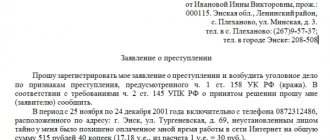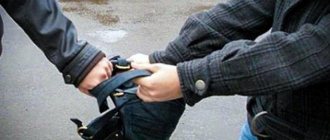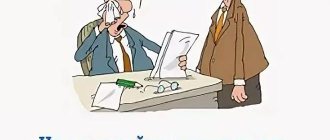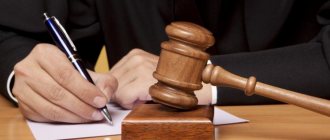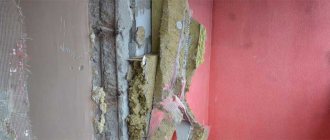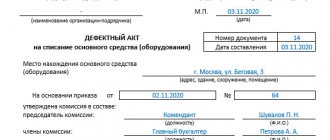It’s always nice to walk into a well-groomed, clean entrance of an apartment building, where the walls are not covered in writing, the glass is not broken, and the elevator call buttons are not burned out. However, the opposite picture is far from uncommon, since not all citizens are ready to take care of common property. That is why, in current legislation, damage to common property in an apartment building is punishable under administrative, and in some cases even criminal liability.
What falls under the common property of residents
A large number of citizens live in apartment buildings (hereinafter referred to as apartment buildings), and the right of ownership of each of the residents is limited to their own apartment. But residents use more than just their own living space. What cannot belong to one of the owners in an apartment building personally, but is an integral part of the house, is called common property. This includes:
- technical rooms such as an attic or basement;
- landings, entrances;
- garbage chute, elevators;
- heating, water supply, drainage risers;
- chimneys, ventilation ducts;
- courtyard area, including small architectural forms located in the courtyard, parking, and landscaping elements.
Thus, everything that is located outside of a single apartment in an apartment building is community property, to which all owners of the apartment building have equal rights. Along with the rights, the owners are legally required to maintain the common property - residents are required to pay contributions for the current maintenance of the common property, as well as for major repairs. The executor in this process is the management organization that took the house on its balance sheet.
What is damage to common property?
Over time, natural wear and tear is inevitable, so even in the absence of targeted action, various elements in common household use can become unusable. In this case, the responsibility of the management organization is to carry out timely maintenance work. But what if the management organization has just installed a children’s playground in the courtyard of the house, and in the very first days the constructed structure was broken and rendered unusable? These actions will be regarded as damage to common property, regardless of whether such actions were of a conscious or unintentional nature. The legislation provides for liability for acts involving damage to the property of apartment buildings.
Some nuances of filling
Events must be presented clearly and in order so that the description reflects the actual course of events. The facts of the case must be succinct, complete and justified. According to the chronology of events, the text is divided into paragraphs. The application must clearly indicate which right of the bearer was violated, and which article of legislation provides for the protection of this right (link to a specific article or legal act).
A claim for compensation for damages resulting from damage or destruction of property has time limits. The statute of limitations is three years from the date the incident occurred. It is impossible to be sure that the court will rule in favor of the plaintiff. It is based on the extent to which the defendant’s responsibility for the crime has been proven.
What the law says
The legislation provides for three types of liability for actions resulting in damage to common property:
- Civil law.
- Administrative.
- Criminal.
The Code of Administrative Offenses considers acts with a low degree of public danger, while serious offenses, called crimes, are subject to criminal liability. The degree of harm in this case is assessed in material equivalent, for example, if minor damage is caused to less than 2,500 rubles, the Code of Administrative Offenses of the Russian Federation is applied to the violator of law and order, namely Article 7.17 (destruction or damage to someone else’s property), or Article 20.1 on petty hooliganism. Under these articles, an offender may be punished with a fine of up to 2,500 rubles or administrative arrest for up to 15 days.
The offender whose actions will be regarded as a crime will be punished much more seriously. In accordance with Art. 167 of the Criminal Code of the Russian Federation, causing damage through the deliberate destruction of other people's property is punishable by a hefty fine, correctional labor or imprisonment for up to two years, and if the act had generally dangerous characteristics, for example, it was committed by arson or explosion, then the offender can be sent to jail for five years .
In parallel with these measures, the offender can be brought to civil liability by filing a claim in court for compensation for damage caused.
Important! Civil liability may occur together with administrative or criminal liability.
We remind you that even if you thoroughly study all the data that is in the public domain, this will not replace the experience of professional lawyers! To get a detailed free consultation and resolve your issue as reliably as possible, you can contact specialists through the online form .
Reporting property damage to the police
In the event of intentional damage to property by attackers, the first authority to turn to is law enforcement agencies. To do this, you must write and submit an application to the official. To ensure that a citizen’s appeal is accepted for consideration and not forced to be redone, it is recommended that you familiarize yourself and study the sample application for damage to property in advance.
Precinct police station no.
Moscow police department
From citizen Alexander Nikolaevich Ivanov
Living at Dzerzhinsky Avenue 5, apt. 3
Telephone
Statement
I ask you to accept and register a statement on my behalf regarding the fact of the unlawful act committed and to consider the possibility of initiating a criminal case in accordance with Article of the Criminal Code No. 167, which was expressed in the deliberate destruction of my property, which caused significant material damage. Based on Article No. 145 of the Code of Criminal Procedure, Part 2, I ask you to notify me of the decision made. Based on the circumstances of the crime, the following can be explained:
If the culprits are children
Very often children and teenagers become the culprits of vandalism in apartment buildings. Persons under fourteen years of age are not held liable. Their legal representatives or guardians will have to answer for the illegal acts of juvenile hooligans. Also, an administrative protocol may be additionally drawn up for persons responsible for raising minors under Art. 5.35 of the Code of Administrative Offenses of the Russian Federation in connection with the improper fulfillment by legal representatives of minors of their parental obligations. Starting from the age of fourteen, children are subject to administrative liability, and from the age of 16 they can be prosecuted under criminal law for damage to common property if there are signs of a crime.
What to do if you are acquitted
Sometimes the court does not find the elements of a crime in the actions of the accused of causing property damage. In this case, criminal punishment is no longer provided, however, civil liability is not removed. Consequently, the perpetrator can be held civilly liable and the losses incurred can be recovered.
Refunds can be denied only in two cases:
- the damage was caused by a natural disaster or military action;
- the damage was caused for reasons beyond the control of the perpetrator.
Such refusal for the stated reasons is final and is not subject to appeal.
Where to contact
If residents have identified the consequences of illegal actions of third parties that resulted in damage or damage to common property, they should first contact the organization that has the apartment building on its balance sheet. It can be:
- Management Company;
- housing construction cooperative;
- homeowners association.
The appeal must be made in writing, indicating in the application a request for drawing up a defect report. With the issued certificate, you should contact the law enforcement authorities - the nearest police station, or the district police officer responsible for a specific area.
In both cases, the police are obliged to accept the statement and begin measures to identify the perpetrators.
Of course, it will be easier to find the culprits when it comes to damage to common property in a communal apartment where a limited number of people live, than when it comes to the issue of a broken playground in the courtyard of an apartment building, where the number of apartments amounts to several dozen.
If the culprit cannot be found, there will be no one to receive compensation for the damage. This is why residents of apartment complexes often install coded doors in their entrances, a video surveillance system, or hire a concierge. However, there is a downside to such measures - such actions lead to an increase in the cost of utilities, so the residents living in the building will have to pay additionally for the work of the concierge or the technical equipment of the apartment building.
Follow the algorithm for UOs, HOAs and residential complexes
- On August 21, our permanent expert Susana Kirakosyan conducted an online seminar for management companies and homeowners associations “Rules for conducting inspections of apartment buildings: theory and practice,” during which she also told how to hold third parties accountable for the damage they caused to the common property of an apartment building.
- This algorithm is an excellent way of self-defense; it will allow you to minimize the risk of being held accountable:
- Draw up the report during an extraordinary partial inspection or during a spring or autumn inspection.
- Based on the inspection performed and the report drawn up, send a claim to the culprit.
The culprit must be clearly known. If you do not know who caused damage to the common property, then you will be responsible for compensating the damage.
Involve law enforcement agencies to identify the offender. This option is suitable for cases of vandalism and hooliganism.
- Contact a court or administrative authority to demand that the person at fault eliminate the deficiencies or compensate for the damage caused.
At this stage, a legal assessment of the method of defense is important: what specific claim to bring.
- Take additional self-protection measures.
If people in your building often misbehave in elevators or damage mailboxes, installing a video camera or hiring a concierge will help you. It is important to use all possible legal means of confirming the guilt of a third party.
You will learn how the algorithm works in real conditions by watching the video recording of the online seminar. Below we will give several examples from judicial practice when, as a result of a well-structured defense, owners were held liable for causing damage to common property.
Collect witness statements
A guilty verdict was passed against the citizen. He, while intoxicated, broke down the door in the concierge's office and smeared it with his blood, broke the glass on the window, broke the blinds, intercom, TV and aquarium.
The incident was confirmed by the testimony of witnesses. The amount of damage caused to the HOA was 100,068 rubles. At the court hearing, the citizen partially admitted guilt in committing the crime. He agreed that he damaged and destroyed property, but indicated that he acted not out of hooligan motives, but because he experienced personal hostility towards the management of the HOA.
How to eliminate obstacles to the use of common property of apartment buildings
Point out the contradictions in the evidence presented of your guilt
The management organization was ordered to take measures to restore the functionality of the ventilation system in the apartment. The court declared this order illegal, pointing out that the State Housing Property Committee did not prove that the MA committed guilty actions (inactions) that resulted in a violation of the requirements.
- Previously, the magistrate court terminated the proceedings because it did not find an offense.
- The evidence presented by GZHI was contradictory and did not allow us to draw an unambiguous conclusion about what exactly was the reason for the lack of ventilation in the living space at the time of the inspection.
Such reasons could be the design flaws of the apartment building built in 1940, the actions of the apartment owner himself, who arbitrarily moved the gas stove and gas water heater, or the actions of the management company, which did not take the necessary measures for the maintenance and repair of common property.
Prove the presumptive nature of the commissions’ conclusions
As a result of a fire that occurred in an apartment building, property belonging to the plaintiff was destroyed in the apartment. According to the plaintiff, the fire occurred due to the fault of the management organization.
The case materials did not confirm that it was the UO who caused the harm. The conclusions of experts and specialists, drawn up pre-trial, did not establish the exact location of the fire, and the conclusions themselves were of a presumptive nature. Causality has not been established.
The court indicated that there were no grounds for holding the management company liable for compensation for damage caused by the fire. And the fact of a fire itself is not an unconditional and sufficient basis for finding the management company guilty of causing losses to the plaintiff.
5 reasons for the courts to apply the provisions on insignificance
On a note
The fault for damage caused to the common property of an apartment building does not always lie with the management organization. But to prove it, you need to work hard. By following the above algorithm and relying on judicial practice that is positive for the Company, you will be able to minimize your risks and hold third parties accountable.
Third parties can be contractors, providers, and even the owners and residents of the apartment building themselves. Sometimes it is their actions or inaction that cause irreparable damage to common property.
Follow these guidelines for reporting violations by third parties to hold them accountable:
- photo or video recording, which will confirm the cause-and-effect relationship;
- witness statements;
- drawing up a commission act - when interfering with the operation of engineering systems, installing illegal structures;
- statement to the police.
- If the guilt of third parties cannot be proven for damage caused to common property, the management organization will be responsible.
- You will learn more details about how to protect yourself from possible risks and properly conduct a home inspection from the video recording of the online seminar.
